Doi Pagoda is the center of spiritual and cultural activities of the whole ancient Son Nam region. Therefore, Doi Pagoda festival is not only a festival of Tien Son people but also a big festival of the region and is known by many people. The ancient Doi Pagoda festival began with the ceremony of announcing the opening of the festival on the morning of the 19th day of the third lunar month. Immediately after that is the water procession ceremony, the place to request water is Ham Long well, one of the 9 wells located at the foot of Doi mountain. The requested water will be used for the "moc duc" ceremony (cleaning the statues of gods and Buddhas) and used as worshiping water throughout the 3-day festival. The 21st is the main festival day with many important rituals taking place. Early in the morning, from the communal house yard of Doi Tam, Doi Trung, Doi Linh, Doi Tin villages, the palanquins are ready. At the appointed time, the palanquin processions go to the main gate of Doi Pagoda and join together into a common procession. Arriving at the temple, the palanquins carry the tablets of the gods into the main hall to listen to Buddhist scriptures and witness the incense offering ceremony and the great ceremony of blessing and peace.
According to ancient customs, Doi Pagoda worships “first Buddha, then gods”. Therefore, the first ritual on the main festival day is to offer incense to Buddha, the offerings are vegetarian. The monk presides as the master of ceremonies, reads sutras, dances and plays the instrument counterclockwise. Buddhists believe that each round running counterclockwise brings more fortune, more blessings, and dispels many bad things and disasters. After the incense offering and playing the instrument, there is a ceremony to worship heaven and earth and a ceremony to thank Linh Nhan Queen Mother (Nguyen Phi Y Lan) and King Ly Nhan Tong - the one who built the pagoda.
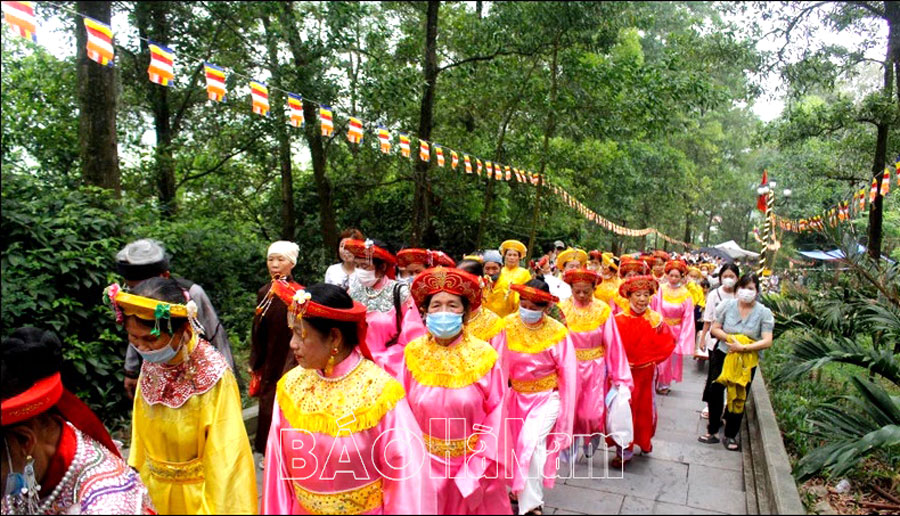
The Doi Pagoda Festival is still held from the 19th to the 21st of the third lunar month. However, the water procession has been performed at the Tich Dien Festival (the 5th to the 7th of the first lunar month), so this ritual is no longer performed at the Doi Pagoda Festival. The procession also changed when on the morning of the 19th, at the yard of the Tien Son Commune People's Committee, the incense offering team consisted of commune and village leaders, representatives of associations, the elderly, people and Buddhists gathered in full. A palanquin was prepared, on which was not an incense bowl or a throne of a deity, but a picture of President Ho Chi Minh. This is a new ritual recently introduced into the festival, demonstrating the tradition of remembering the source of water and the boundless love for Uncle Ho. The people welcomed Uncle Ho back to join in the festival of their homeland and wished that Uncle Ho would witness the changes and growing development of Tien Son Commune today.
Leading the incense offering procession is the lion and dragon dance team to the beat of the festival drums, followed by the procession of the god flags, the Buddha flags and the procession of the offerings made by the women, followed by the male and female worship teams, Buddhists, people and tourists from all over. The procession stops at the ceremonial yard at the foot of Doi Pagoda for the opening ceremony. After the opening ceremonies and the drum performance by the Doi village women's drum team, the three groups come in to offer offerings and incense to commemorate the gods and Buddhas. The worship teams conduct the ritual under the guidance of the presiding monk.
In the old festival, in addition to the ceremony, the festival was extremely rich with many fun games organized such as: rice cooking competition, weaving competition, cheo singing, love singing, duet singing, cockfighting, to tom diem, tu linh dance, wrestling, human chess, Chinese chess..., in which the most exciting and attractive was the human chess competition, especially the elderly who were good at chess from all over the place coming here to attend the festival. The human chess competition was held continuously for 3 days of the festival. When entering the match, each side had a person holding a drum and beating it continuously to make it difficult for the opponent to concentrate on thinking about the moves. However, everyone was happy because the match was not affected by the psychology of winning or losing, but the main purpose was to have fun, so the drum beat added to the excitement.
In addition to human chess, Chinese chess also attracts many participants. Chinese chess is mounted on a stick about 1.5m high and is moved during the game and inserted into the holes already made on the ground. Participants in the game of Chinese chess include two players, two servers (who pluck and insert the flags to replace the player's position) and a referee. When watching Chinese chess, people are usually quiet, only admiring when both sides perform high and beautiful moves...
Coming to the festival space of Doi Pagoda, in addition to performing spiritual and religious rituals, visitors can also enjoy the scenery of the pagoda in spring, learn about the historical and cultural values of the pagoda through precious relics from the Ly Dynasty that are still preserved today such as Kim Cuong statues, bird-headed statues, terracotta carvings and especially the Sung Thien Dien Linh stele - a national treasure, placed in the stele house in front of the main hall of Doi Pagoda.
Chu Binh
Source: https://baohanam.com.vn/van-hoa/le-hoi/thang-ba-tray-hoi-chua-doi-156031.html



![[Photo] General Secretary To Lam presents the title "Hero of Labor" to the Party Committee, Government and People of Ho Chi Minh City](https://vphoto.vietnam.vn/thumb/1200x675/vietnam/resource/IMAGE/2025/4/30/08a5b9005f644bf993ceafe46583c092)
![[Photo] Flag-raising ceremony to celebrate the 50th anniversary of the Liberation of the South and National Reunification Day](https://vphoto.vietnam.vn/thumb/1200x675/vietnam/resource/IMAGE/2025/4/30/175646f225ff40b7ad24aa6c1517e378)

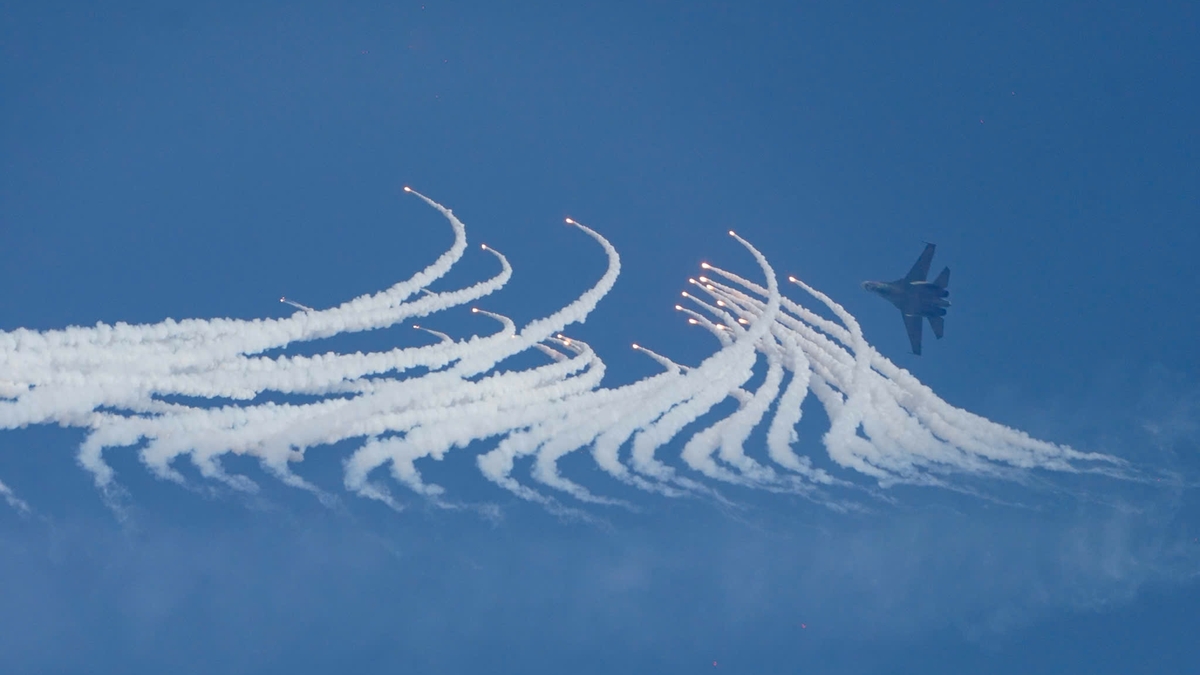
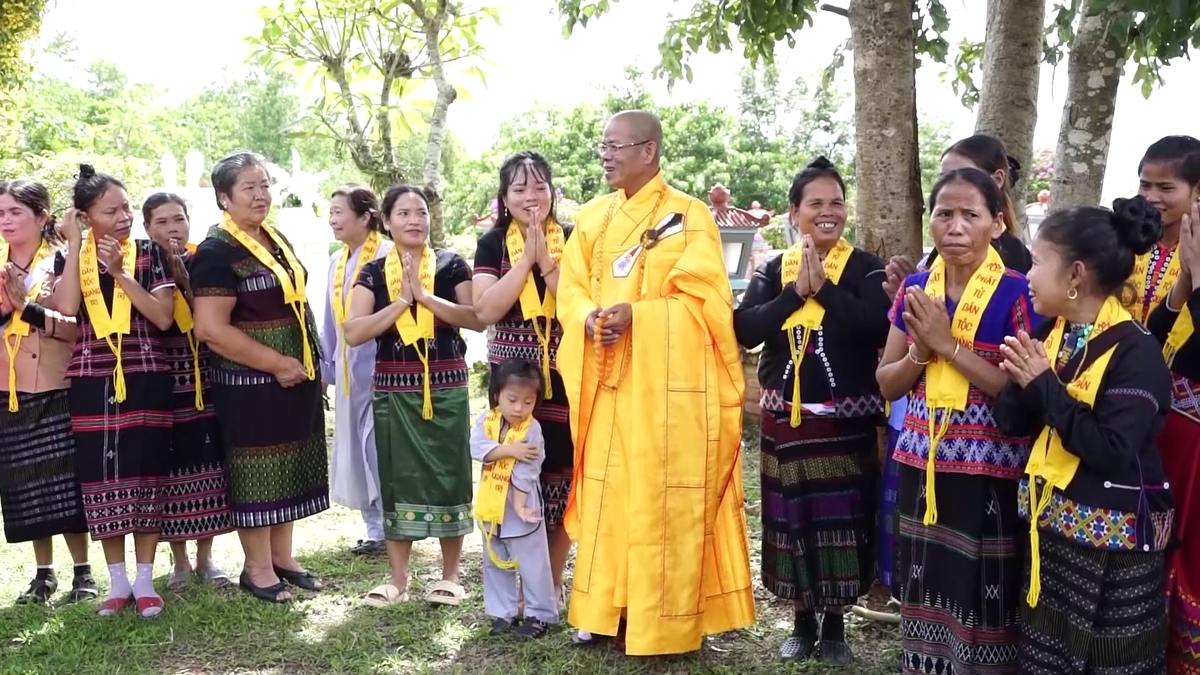
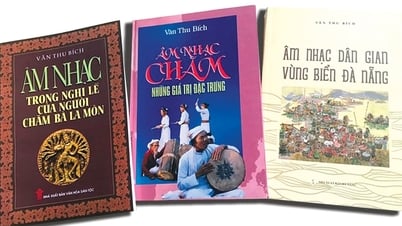
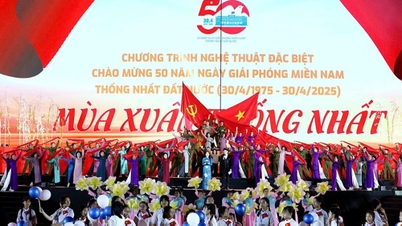
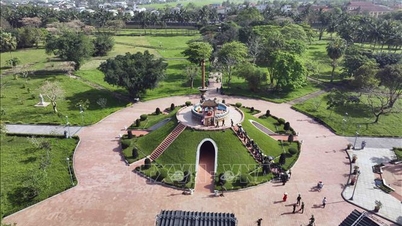
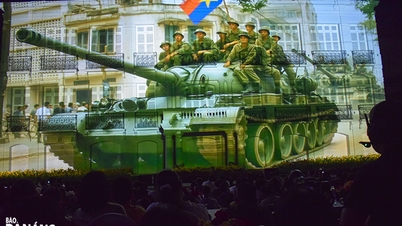






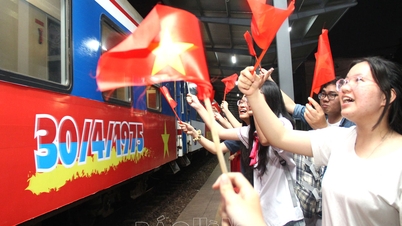
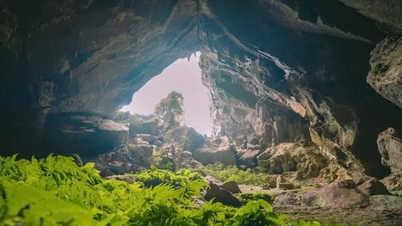

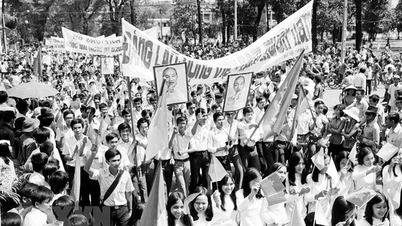
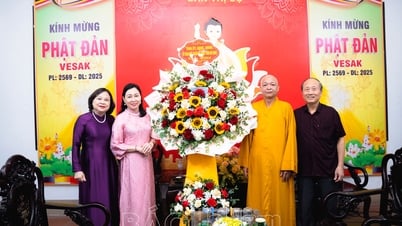
![[Photo] Demonstration aircraft and helicopters flying the Party flag and the national flag took off from Bien Hoa airport](https://vphoto.vietnam.vn/thumb/1200x675/vietnam/resource/IMAGE/2025/4/30/b3b28c18f9a7424f9e2b87b0ad581d05)















































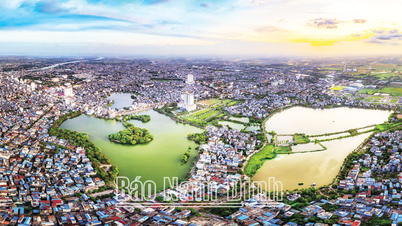



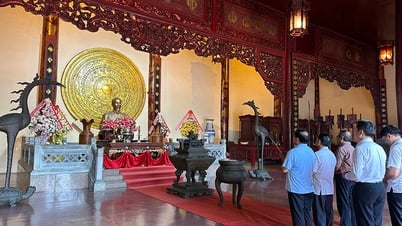
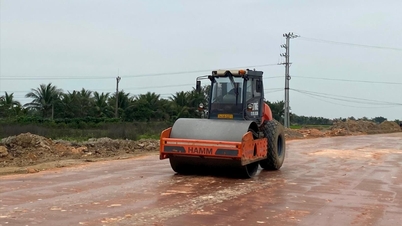













Comment (0)